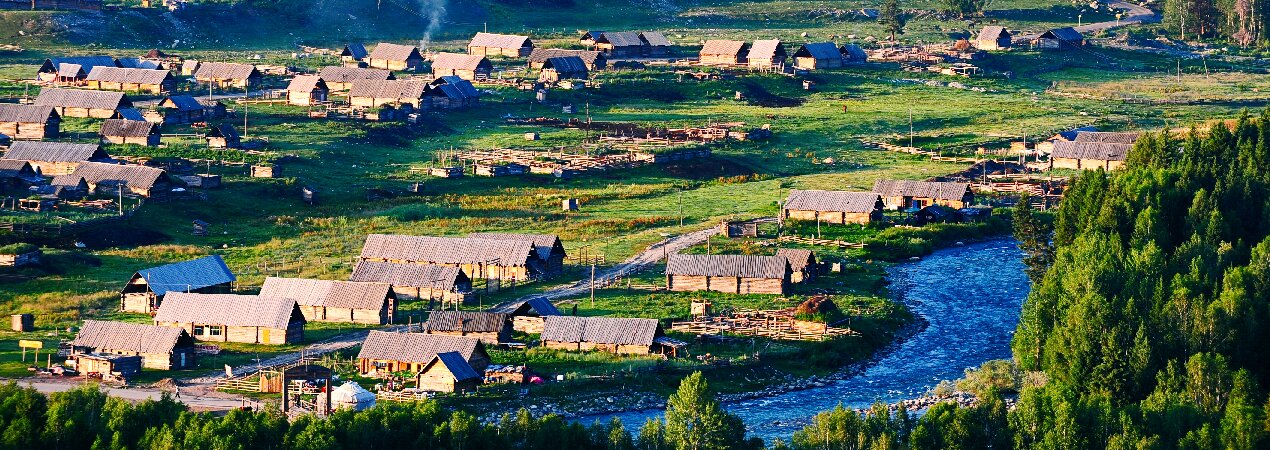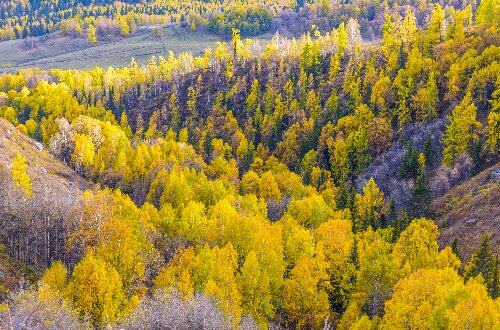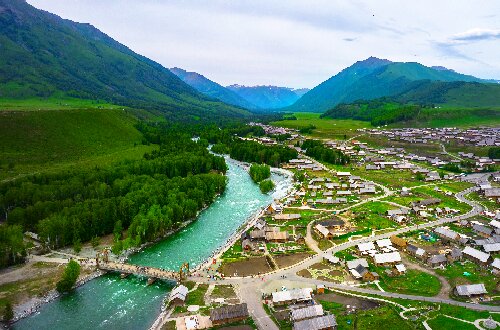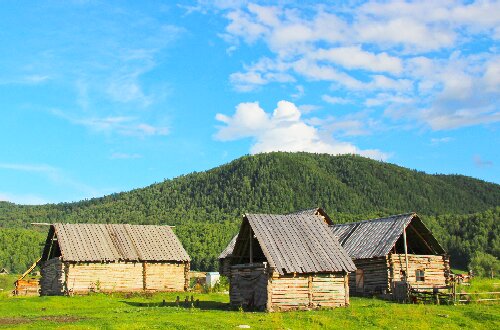Hemu Village

Hemu Village is located in a river valley surrounded by mountains about 30 kilometers east of Kanas Lake in Altay Prefecture, Xinjiang. As a border village, it borders Mongolia, Russia, and Kazakhstan. With a total area of 1,590 square kilometers, it is the farthest and largest among the three remaining Tuvan villages of the Mongolian ethnic group (Hemu Village, Kanas Village, and Baihaba Village). Renowned for its primitive wooden architecture, autumn birch forests, and snow-capped mountain grassland scenery, Hemu Village is hailed as a "fairy-tale world".
- Chinese name: 禾木村 Hé Mù Cūn
- Suggested time: 1 - 2 days
- Ticket: The entrance ticket plus round-trip shuttle bus fare is 102 yuan, and other recreational activities are charged additionally.
- Open hours: From May 1st to October 15th, it is open from 08:00 to 20:00; from October 16th to April 30th of the next year, it is open from 10:00 to 18:00.
- The best time to visit: From May to October
- Address: Hemu Village, Hemu Kanas Mongolian Township, Burqin County, Altay Region, Xinjiang Uygur Autonomous Region, China
- How to get there: It is recommended to travel by self-driving, which will be more convenient.
Highlights of Hemu Village
Birch Forest
 Birch Forest
Birch ForestHemu Village, known as the "Fairy Tale Village", is one of the top ten birch forest viewing sites in China. The birch forest here is famous for its unique birch tree clusters, the magnificent landscapes that change with the seasons, and the rich ethnic minority cultural atmosphere. Together with the surrounding snow-capped mountains, grasslands, and rivers, it forms a harmonious natural picture, known as the "fairyland on earth", attracting countless photography enthusiasts, painters, and nature lovers every year. Here, tourists can admire the magnificent natural scenery and experience the strong ethnic cultural atmosphere. Whether strolling in the golden birch forest or experiencing the traditional life of the Tuva people, the birch forest brings you unforgettable memories.
Hemu Bridge
 Hemu River and Hemu Bridge
Hemu River and Hemu BridgeHemu Bridge was first constructed in 1918 by Belarusians using logs and rivets. Due to years of disrepair, it was dismantled in 1970, and the current bridge was rebuilt on the original site. As a fully wooden-structured bridge, it is built with logs, featuring a solid and simple design.
Hemu Bridge serves as the essential route for villagers to herd livestock up the mountains and an important passage connecting the village to the outside world. It attracts numerous tourists who come to take photos and experience horseback riding.
Tuva Log Cabins
 Tuva Log Cabins
Tuva Log CabinsThe residents near Hemu Bridge build their houses using the well-dried timber structure, utilizing local trees. The lower half of the house features logs arranged in a well-dried timber framework, while the upper part has a pointed roof. The walls are stacked with logs each 30 to 40 centimeters in diameter, and the gaps between every log are filled with a type of grass called "nuk". When this grass absorbs water, it swells to seal the crevices completely, making the walls airtight to retain warmth, prevent moisture, and block cold winds.
These pointed-roof log cabins have flat ceilings inside. The space between the flat ceiling and the pointed roof is used for storing food and fodder—a unique architectural feature of the Tuva people. Such characteristic log cabins can only be seen in the three Tuva settlements: Hemu, Kanas, and Baihaba.
Recommended Shooting Spot: The Hadeng Viewing Platform is located on the hillside across from the Hemu River, about 20 minutes' walk from the village. From the platform, visitors can capture panoramic views of the village, making it the best spot for photographing Hemu Village and a favorite among photography enthusiasts.
Educational Value
The Tuva wooden house adopts a "well-dried timber" structure of stacked logs. Each log with a diameter of 30 to 40 cm is interlocked to form a load-bearing frame. This structure has good seismic resistance and can adapt to the earthquake-prone environment in mountainous areas. When the logs are stacked horizontally, the friction and self-weight form a stable support, avoiding the shear weakness of traditional masonry structures. Visitors can tour the traditional Tuva wooden houses to experience their architectural features and learn about the construction process.
Activities to do at Hemu Village
Exploration of Tuva Culture: Learn to craft handicrafts like wood carving and embroidery from Tuva artisans, and study the performance of traditional musical instruments such as Chuwur.
Equestrian Experience: Under the guidance of professional riders, learn horseback riding, understand equine behaviors and equestrian knowledge, and ride through the grassland vistas around Hemu Village.
Drop us a line and we'll connect you with the top China expert in no time!